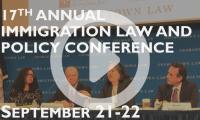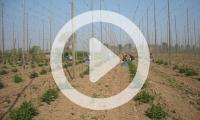Employment & the Economy
Recent Activity

This year’s Immigration Law and Policy Conference examines the immigration policy agenda under the Trump administration, including changes in the asylum system; the vast societal upheaval brought on by COVID-19 and the rising racial justice movement; what the future of U.S. immigration may look like; and many other topics related to U.S. immigration policy.

This discussion explores how development and humanitarian actors in low- and middle-income countries can engage with local institutions to promote the social and economic inclusion of refugees and how this inclusion can enhance engagement with other traditionally marginalized groups.

In this bipartisan discussion, two border-state members of Congress—Rep. Veronica Escobar and Rep. Dan Crenshaw—discuss the response to the coronavirus outbreak, how it is affecting the interconnected border region, and what the future might hold.

Governments are facing urgent pandemic-related questions. One of the more pressing ones: Who is going to harvest crops in countries that rely heavily on seasonal foreign workers? In this podcast, MPI experts examine ways in which countries could address labor shortages in agriculture, including recruiting native-born workers and letting already present seasonal workers stay longer.

This webinar, organized by MPI and the Zolberg Institute on Migration and Mobility at The New School, discussed migration policy responses around the globe in response to the COVID-19 pandemic, and examined where migration management and enforcement tools may be useful and where they may be ill-suited to advancing public health goals.



